Agronomic Insights
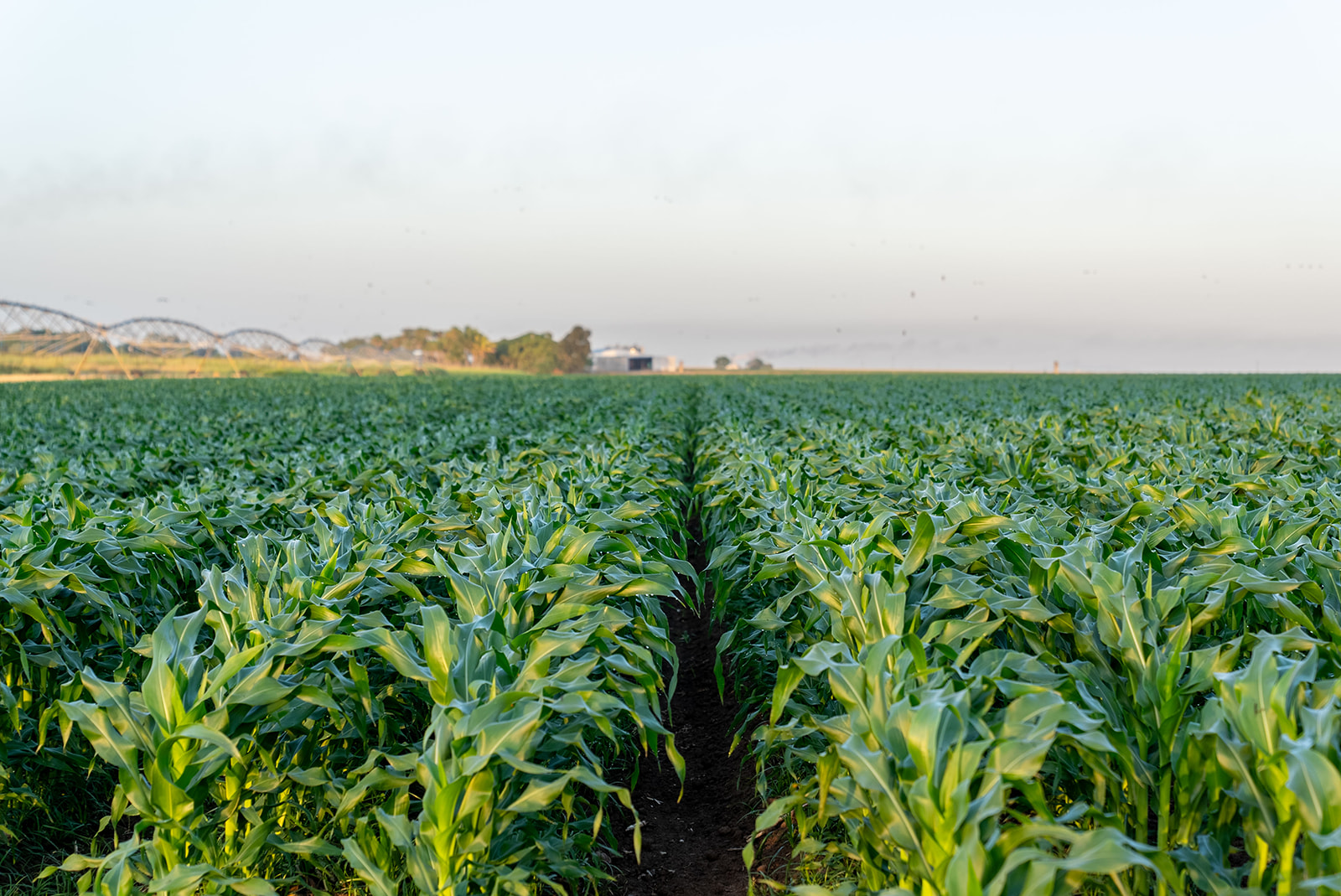
David McRae – IPF Technical Agronomist
As farming systems have developed and nitrogen (N) requirements have increased, growers and contractors have applied higher rates of N at planting/seeding time due to time and/or labour constraints. In some situations, banding high rates of urea fertiliser at planting/seeding beside or below the seed furrow has impacted germination and reduced plant populations. Crops which can compensate for reduced plant stands can often overcome reduced populations but crops such as maize, which have a limited ability to tiller or flex cob numbers generally suffer yield loss.
The main purpose of the seeding/planting operation is to establish an even plant stand, achieving the targeted population. High rates of fertiliser can comprise seed safety which generally reduces plant establishment, early growth and often final yield depending on crop species. There are two ways that fertiliser can affect germination and plant growth. They are salt injury (high osmotic pressure) and ammonia (NH3) toxicity. Salt injury generally occurs when the rate of banded fertiliser applied in the seed furrow is greater than the safe limit for the particular crop variety.

Ammonia toxicity can either occur from urea or DAP applied in the seed furrow or high rates of urea banded close to the seed furrow. There is a wide range of tolerances to ammonia among currently grown crop types and it is important to consider this when planning your fertiliser application strategy.
The best way to maximise seed safety and crop establishment is to separate high rates of nitrogen, phosphorus (P) and potassium (K) fertilisers from the seed row. Traditionally, a 5cm x 5cm separation (5cm to the side and 5cm below) for high rates of N fertilisers has been recommended. Where high rates of urea are banded on wide row spacing this separation to seed may not be enough.
Adding extra rows or row attachments to separate seed and high N rates can cause challenges for machinery design, stubble flow, trash handling and fertiliser furrow closing. Closing the fertiliser furrow is critical with designs that open the fertiliser furrow in combination with the seed furrow opener and for wide row crops (75 -100cm) such as maize and sorghum. Closing the fertiliser furrow is critical to prevent ammonia movement into the seed and to also reduce volatilisation losses.
Many factors influence the amount of N fertiliser that can be safely banded is a separated fertiliser furrow. Listed below are the major points to consider when banding high rates of urea beside or under the seed row during maize planting.
Soil factors
Soil Texture
Soil texture affects the cation exchange capacity (CEC) and moisture holding capacity of the soil. Soils with higher CEC and clay content have a greater potential to adsorb ammonium and reduce the potential to produce ammonia (NH3) gas. Texture also impacts water movement and gas diffusion through the soil profile.
Soil tilth
The flow and condition (cloddy, friable) of the soil will alter how well the seed and fertiliser furrows are closed and consolidated. Loose or cloddy soil or bands close to the soil surface can allow ammonia gas to reach the seed or escape from the soil.
Soil moisture
Apart from effecting soil tilth, higher soil moisture contents provide a barrier against the movement of gases. Moisture buffers ammonia diffusion through the soil, reducing soil air pockets where ammonia can move into, keeping the area of ammonia tighter and more concentrated. Banding in wet soils can lead to smearing or slotting that can maintain high concentrations of ammonia for longer and potentially an escape slot to the soil surface for volatilisation.
Separation distance
The distance between the seed row and fertiliser band and, the position of the fertiliser band e.g. to the side or below. Separation of 5 to 7.5cm with well consolidated soil reduces the risk of damage. Depending on soil texture, evaporation can move soluble salts and gases into the seed furrow if the fertiliser band has been placed below the seed.
These soil properties influence soil water and gas movement from the banded N fertiliser furrow towards the seed.
Factors influencing ammonia production
Buffering capacity
Soils ability to resist an increase in fertiliser band pH. Higher pH values will increase the production of ammonia. Generally, 150-200 kg/ha of N as banded urea will increase soil pH for all Australian soils, converting ammonium to ammonia (Figure 1).
Soil temperature
As temperature increases more ammonium is converted to ammonia. Also, water holds less ammonia with increasing temperatures (Figure 1).
N rate
Larger application rates result in greater concentrations of ammonium, producing higher soil pH values. Rochette et al (2013) measured increasing pH, higher ammonium concentration and greater ammonia losses from 0, 80, 120,160 and 200 kg/ha N as urea. The urea was banded 5 cm deep in 75 cm width rows on a silty loam soil with a CEC of 17.7 cmol(+)/kg (Figure 2).
Row spacing
There are less metres of row per hectare for wider rows and this concentrates more urea per metre of row. The concentration of urea in the fertiliser row drives pH increase and production of ammonia.
Colliver and Welch (1970) found that ammonium + ammonia concentrations of 944 mg/kg could retard germination and early growth of maize. Roots would grow through 3 cm layers of soil containing 1,172 mg/kg (pH 8.4) but did not grow into layers containing 1485 mg/kg (pH 8.7).
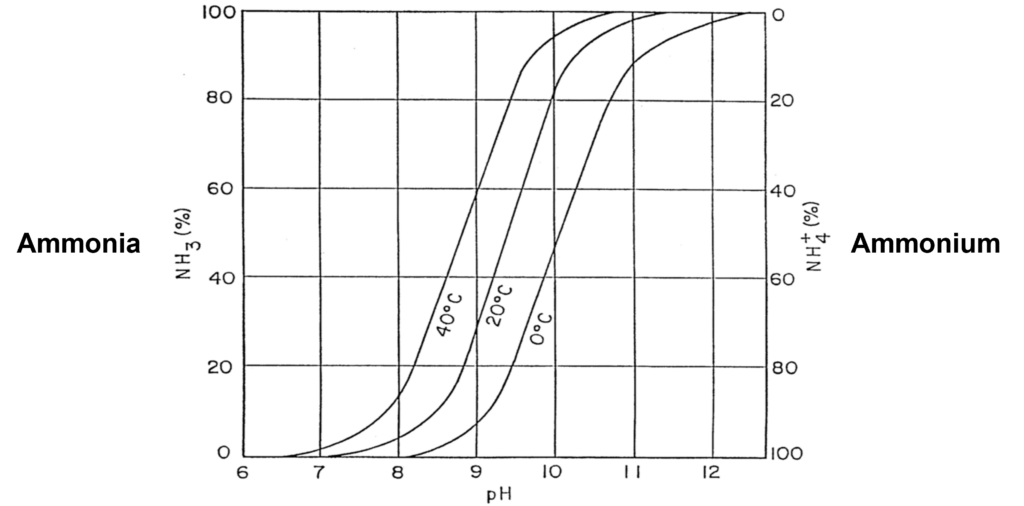
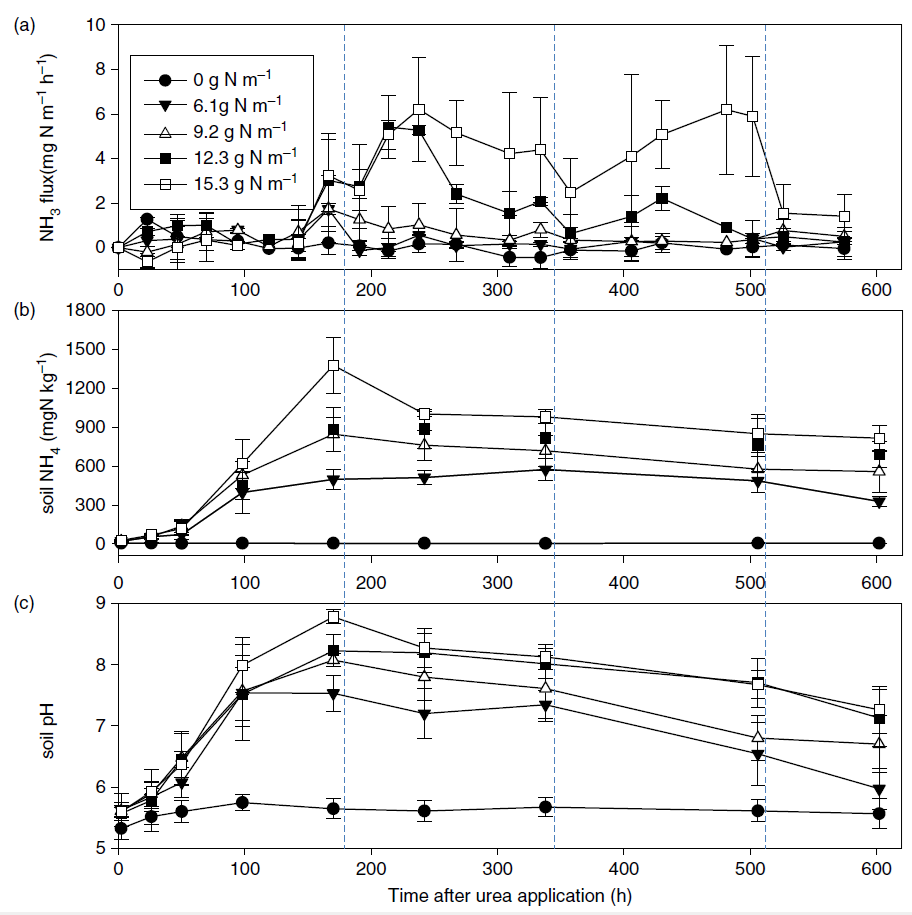
Management Factors to reduce potential issues
Application timing and method
Decreasing N rates by splitting N applications between planting and in-crop will reduce potential issues. Depending on the availability of equipment, N can be effectively applied in-crop by:
- side-dress urea with interrow cultivation between 4-6 leaf growth stage.
- surface band EASY N with Y-Drop applicator nozzles between 4-8 leaf growth stage, depending on equipment clearance.
- fertigate EASY N through centre pivot or lateral irrigators between 4-12 leaf growth stage.
- broadcast / topdress Urea between 4-8 leaf growth stage. When topdressing Urea in crop and where irrigation cannot be applied within 2 days of application, Green Urea NV is an option to reduce surface volatilisation losses.
Splitting N applications and matching timing closer to crop uptake can improve nitrogen use efficiency and reduce losses.
When high nitrogen rates are banded into the soil, several strategies can be considered to minimise fertiliser damage:
- Do not sow seed directly above high nitrogen bands.
- Where high rates of urea are banded (>200kgN/ha) at 75cm row spacing allow at least a week in time separation to sowing in moist soils and longer in dry soils.
- When banding high rates at or within several days of sowing, N bands should be placed deeper in the soil (20-25cm) (Glendinning 1990).
Nitrogen source
The major issue occurs when urea is converted to ammonium and the resultant increase in fertiliser band pH. If N application cannot be split and growers can only apply their targeted N rate during planting, then changing the N form applied made be a solution. Substituting some of the urea N with Gran-Am or other acidifying fertilisers will reduce fertiliser band pH and potential ammonia production.
Alternatively, slowing the conversion of urea to ammonium which will also reduce ammonium concentrations and pH increase, which can be beneficial. Janke et al (2020) found that when urea was treated with NBPT, it slowed the formation and reduced the ammonium concentration produced in the fertiliser band (Figure 3).
Operational crop management and timing can benefit from banding high rates fertiliser at or prior to sowing. Similarly, there are agronomic benefits through enhanced root rhizosphere processes due to the increased intensity of soil nutrient supply (Shen et al 2012). However, overuse or excessive rates of fertilisers, or incorrect placement or soil conditions may lead to seed death, reduce plant vigour and reduction in root growth and rhizosphere processes.
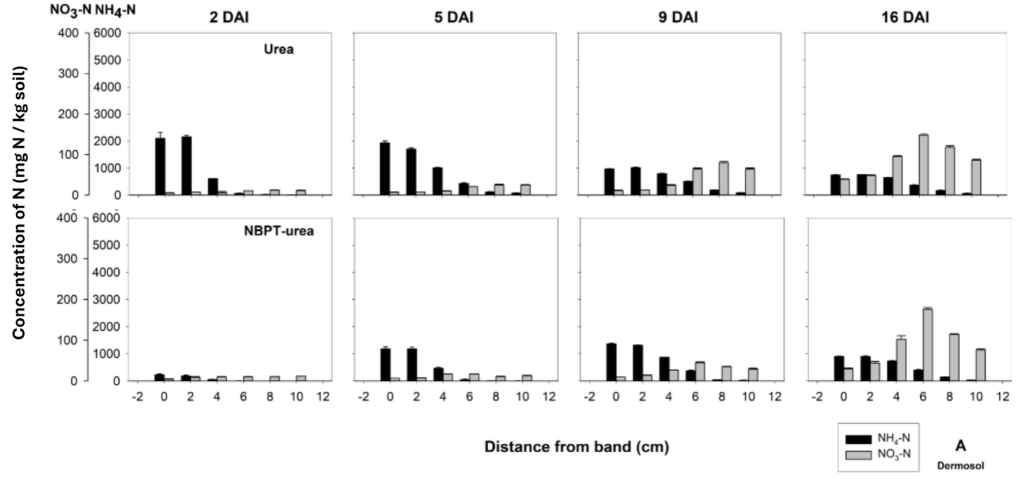
Further Information
For further information, please feel free to contact david.mcrae@incitecpivot.com.au or 0477 987 321 and Lee Menhenett – 0412 565 176 lee.menhenett@incitecpivot.com.au.
References
Colliver, G.W. and Welch, L.F. (1970). Toxicity of preplant anhydrous ammonia to germination and early growth of corn. II. Laboratory studies. Agronomy Journal 62, 346-8.
Glendinning, J.S. (1990) Fertilizer Handbook. Incitec Ltd.
Janke, C.K., Fujinuma, R., Moody, P.W. and Bell, M.J. (2020). Distribution and chemical speciation of nitrogen from band-applied enhanced-efficiency fertilisers. Proceedings of the Australian Society of Sugar Cane Technologists, volume 42.
Rochette, P., Angers, D. A., Chantigny, M. H., Gasser, M.-O., MacDonald, J. D., Pelster, D. E. and Bertrand, N. (2013). NH3 volatilization, soil NH4 concentration and soil pH following subsurface banding of urea at increasing rates. Can. J. Soil Sci. 93: 261-268.
Shen J, Li C, Mi G, Li L, Yuan L, Jiang R and Zhang F. (2012). Maximizing root/rhizosphere efficiency to improve crop productivity and nutrient use efficiency in intensive agriculture China. Journal of Experimental Botany.
DISCLAIMER
This is a guide only, which we hope you find useful as a general tool. While IPF has taken all reasonable care in the preparation of this guide, it should not be relied on as a substitute for tailored professional advice and IPF accepts no liability in connection with this guide. Incitec Pivot Fertilisers manufactures and sources fertilisers from other suppliers. The fertiliser supply chain extends beyond the company’s direct control, both overseas and within Australia. Incitec Pivot Fertilisers hereby expressly disclaims liability to any person, property or thing in respect of any of the consequences of anything done or omitted to be done by any person in reliance, whether wholly or in part, upon the whole or any part of the contents of this article.
You might also be interested in these
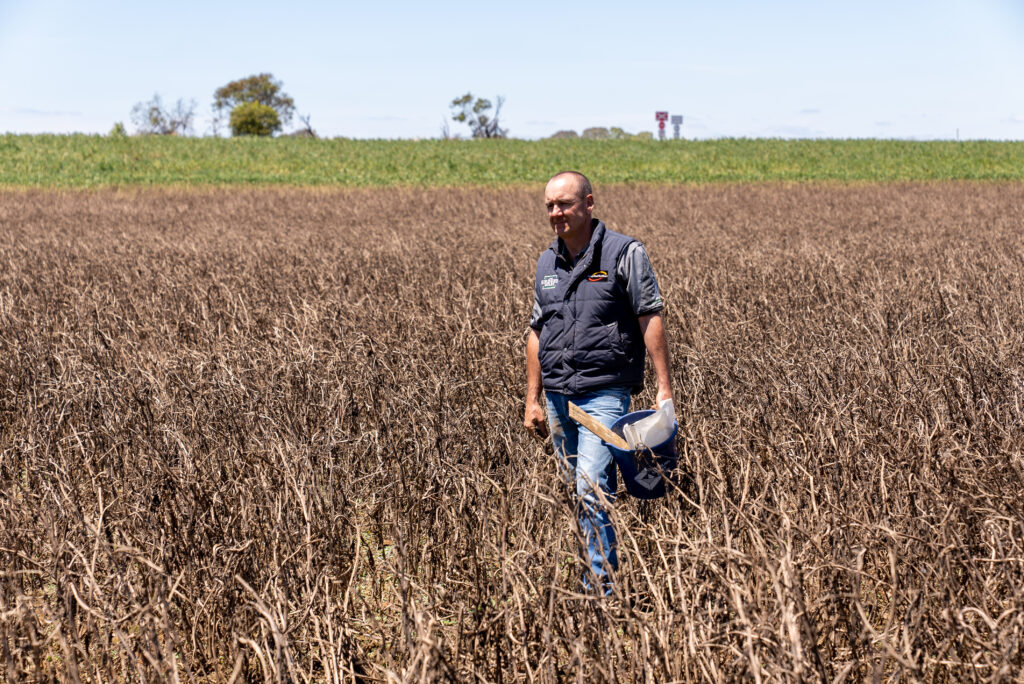
Pasture, Summer Crop
Taking Stock After the Floods
March / 2023
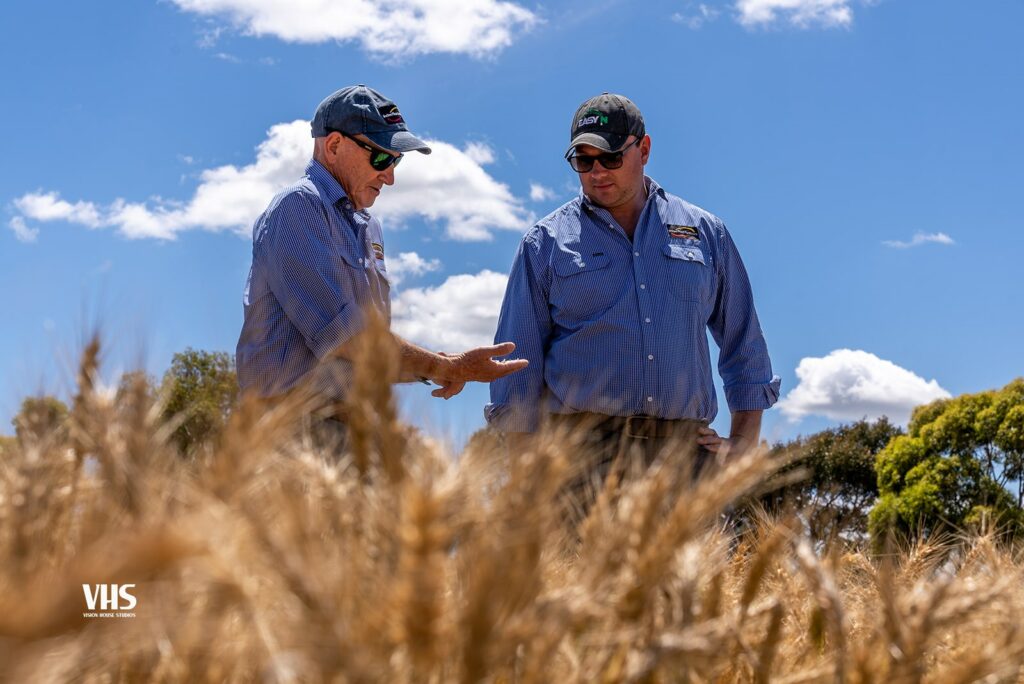
Winter Crop
Strategies for optimising nitrogen use efficiency for challenging seasons
June / 2023
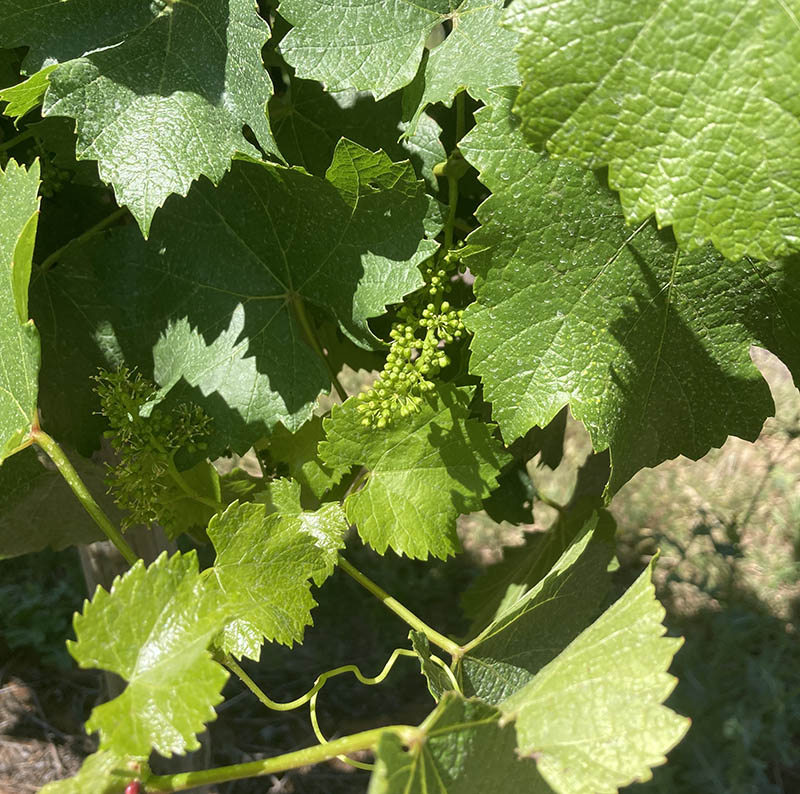
Horticulture
The power of the petiole test
October / 2023
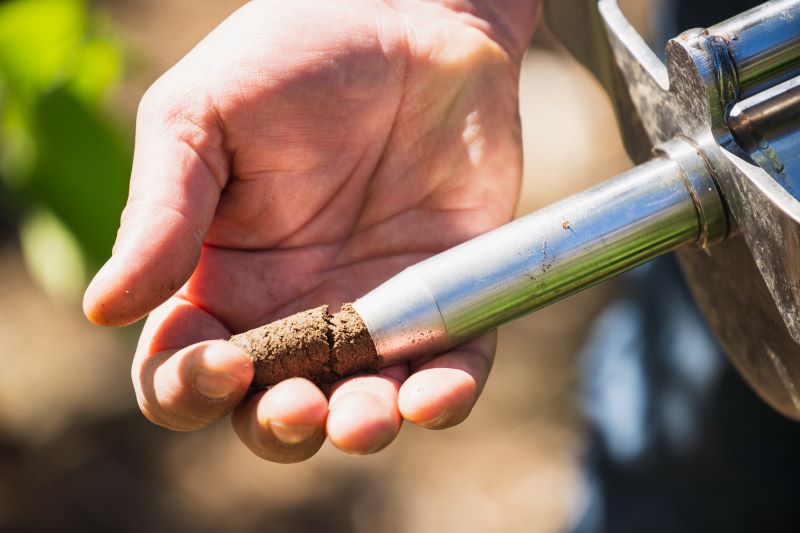
Winter Crop
Deep soil analysis shines light on effective nitrogen budgeting
June / 2023

